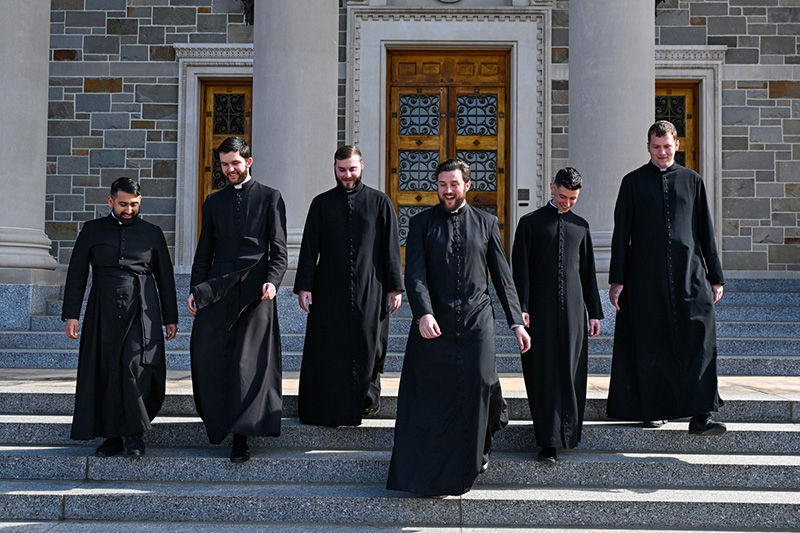
CHARLOTTE — “The faith is something that needs to be lived out day-to-day,” said Deacon Joseph Yellico.
For the six men who will be ordained priests June 14, the beauty of the Catholic faith has unfolded from their roots in St. Joseph College Seminary to the doorsteps of the priesthood that awaits them.
One of them, Deacon Yellico, reminds us that in the monotony of daily routine, we can easily lose sight of the “wonder” of our faith.
For the first time, all the men being ordained priests for the Diocese of Charlotte started their formation within the diocese at its St. Joseph College Seminary. This diverse class brings men from parishes across the diocese. They are:
- Deacon Christopher William Angermeyer, 28, of St. Thomas Aquinas Parish in Charlotte
- Deacon Anthony del Cid Lucero, 30, of St. Joseph Parish in Newton
- Deacon Nicholas James Kramer, 25, of St. Margaret Mary Parish in Swannanoa
- Deacon Kolbe Raymond Murrey, 25, of St. John the Baptist Parish in Tryon
- Deacon Andrew Jeffery Templeton, 26, of St. Michael the Archangel Parish in Gastonia
- Deacon Joseph Gerard Yellico, 30, of St. Mark Parish in Huntersville.
The six men recently received their Master of Divinity degrees from Mount St. Mary’s Seminary and School of Theology in Cincinnati, Ohio, the final academic step of their formation.
Deacon Murrey, who also received a Master of Arts in Theology, said he is excited about becoming a priest.
“I’m most looking forward to serving in a parish,” he noted. Deacon Murrey said that during his summer assignments and ministering as a deacon, he’s seen that the life of a priest is being in the parish. “I’m excited to be with the people and in a parish and bringing them to Our Lord on a daily basis.”
He is one of three deacons who entered the college seminary shortly after high school, making him and Deacons Kramer and Templeton three of the younger priests to be ordained.
Deacon Kramer is also the first from “Charlie class,” the third class at St. Joseph College Seminary, to be ordained priests.
Not having to leave the diocese to take the leap to seminary, Deacon Kramer said, is one of the reasons he is days away from becoming a priest. Being able to easily visit the seminary before he made a commitment and then to stay within the diocese – with other students he knows and with priests he has known – played a vital role in building his vocational foundation.
“It is a really important thing for us early on in our formation to get connected to our diocese, because for us, our diocese is the place in which, unless the bishop decides to send me somewhere else, I will be ministering for the rest of my life,” Deacon Kramer said. “It’s very important to know your diocese and for them to know you, so that when you do show up at their parish 10 years down the road, you’re not a new face.”
Deacon Templeton said he’s looking forward to the beautiful moments he’s going to have as a priest, from his first confession to his first Mass and first anointing.
In addition to the seminary, the diocese has helped foster many vocations through its programs.
Quo Vadis Days, a week-long vocation discernment camp for young men, helped several deacons determine their path to the priesthood at an early age. Deacon Angermeyer, for example, attended the diocese’s first camp in 2013.
“It was very helpful in being able to talk to priests and discuss how to live a good life, how to live a holy life, so I can actually hear my call,” Deacon Angermeyer said. “It was very influential on actually helping me develop my spiritual life so that I could actually hear our Lord’s call.”
It was always exciting to see the Church outside of just my parish,” he recalls of going to the annual event as a young child. “I saw people from different backgrounds and kids my own age engaging in the faith in a deeper way.”
Any time a classmate becomes a priest, Deacon Yellico says, it’s inspirational because they’ve played a role in each other’s vocational path. Yet Deacon Yellico, the first from the “Delta class” – the fourth class at St. Joseph College Seminary – is especially excited to be receiving holy orders alongside five others who walked the same path.
“We’re going to be serving this diocese, who has been so generous to us. But not only are we going to be serving it, but we’re going to be serving it together as brothers,” he said. “Even when we’re dispersed among the diocese at different parishes that we’re going to, we’ll still be doing it as a fraternity.”
Deacon Angermeyer said it’s a blessing to be among the first full class from St. Joseph College Seminary to be ordained to the priesthood together.
“My brothers are the ones that can challenge me at times and push me to go farther, to be holier, to pursue Our Lord more, and to grow in virtue,” he said.
As diversity in the diocese continues to grow, Deacon del Cid Lucero said he hopes to help unify the communities as one Church.
“Our faith is what’s going to bring us to salvation. One of the things that I hope to work on is bringing communities together – the English-speaking community, the Hispanic community. We’re here to work together to continue building the Church of God. We are one universal Church,” he said.
All are welcome to attend the 9 a.m. ordination Mass Saturday, June 14, at St. Mark Church, located at 14740 Stumptown Road in Huntersville. Overflow seating will be in the St. Mark School gym.
Additional parking with shuttle service will be available starting at 7:30 a.m. from Grand Oaks Elementary School, 15410 Stumptown Road.
A reception will follow Mass in the Monsignor Kerin Center. The new priests will offer first blessings from 1 to 3 p.m. in St. Mark Church.
— Kimberly Bender. Photos by Troy C. Hull
Vesting the new priests
During the June 14 Mass, the newly ordained priests remove their deacon’s stoles and are presented with the symbols of their new office in the Church: a priestly stole and chasuble (vestment). This moment is known as the “investiture.” The priests are assisted by other priests they have personally chosen to vest them.
- Deacon Christopher Angermeyer: Father Matthew Codd, pastor of St. Thomas Aquinas in Charlotte
- Deacon Anthony del Cid Lucero: Father Tim Reid, pastor of St. Ann Church in Charlotte
- Deacon Nicholas Kramer: Father Carl Kaltreider, pastor of Our Lady of the Angels in Marion
- Deacon Kolbe Murrey: Father Matthew Buettner, spiritual director of St. Joseph College Seminary
- Deacon Andrew Templeton: Father James Ebright, priest in residence at St. Michael the Archangel in Gastonia
- Deacon Joseph Yellico: Father John Putnam, pastor at St. Mark Church in Huntersville
First Masses of Thanksgiving
Following their ordination, the new priests will offer first Masses at their home parishes on Sunday, June 15:
- Deacon Christopher Angermeyer: 2 p.m. at St. Thomas Aquinas Church in Charlotte. Homilist: Monsignor Patrick Winslow, vicar general and chancellor of the Diocese of Charlotte.
- Deacon Anthony del Cid Lucero: 11:45 a.m. Spanish Mass at St. Joseph Church in Newton. Homilist: Father Alphonso Gomez, pastor of St. Francis of Assisi Parish in Lenoir.
- Deacon Nicholas Kramer: 2:30 p.m. at St. Lawrence Basilica in Asheville. Homilist: Father Brian Becker, vocations promoter for the Diocese of Charlotte.
- Deacon Kolbe Murrey: 11 a.m. at St. John the Baptist Church in Tryon. Homilist: Father Matthew Kauth, rector of St. Joseph College Seminary.
- Deacon Andrew Templeton: 9 a.m. at St. Michael the Archangel Church in Gastonia. Homilist: Father Tim Reid, pastor of St. Ann Parish in Charlotte.
- Deacon Joseph Yellico: 9 a.m. at St. Mark Church in Huntersville. Homilist: Father John Putnam, pastor of St. Mark Parish.
Meet the priests-to-be
Deacon Christopher William Angermeyer
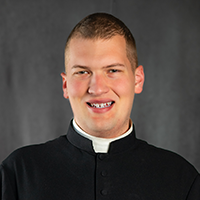
Home parish: St. Thomas Aquinas, Charlotte
Birthplace and raised in: Charlotte
Age: 28
How do you feel like your parish contributed to your vocation and a rising number of vocations from St. Thomas Aquinas in Charlotte?
“It helped that the parish is diverse with people from all different backgrounds, so you get to experience the world-wide Catholic faith. One of the biggest things that shaped me was the prayers of the people. There are people who would pray the rosary every single week for vocations and that has led us to have a good amount of vocations come from St. Thomas Aquinas Parish.”
Deacon Anthony del Cid Lucero
 Home parish: St. Joseph, Newton
Home parish: St. Joseph, Newton
Birthplace and raised in: Hickory, N.C.
Age: 30
When did you first realize you had a call to the priesthood?
“My serious discernment began the year I graduated from high school. I knew that I was called to do great things in life. I always saw the love my parents had for Our Lord and the Blessed Mother and was something that I wanted to have from a young age. As a young adult outside of high school, I started to really ask God what He wanted from me. From there I noticed my profound longing for the Lord in prayer, service, and in the sacraments. The Blessed Virgin Mary was also always a guide through my discernment.”
Deacon Nicholas James Kramer
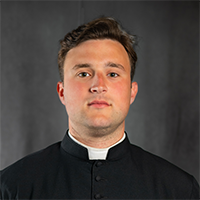 Home parish: St. Margaret Mary, Swannanoa
Home parish: St. Margaret Mary, Swannanoa
Birthplace: Omaha, Nebraska
Raised in: Old Fort, NC
Age: 25
What is something someone would be surprised to learn about you?
“For a while in high school, I worked as a mountain bike mechanic in downtown Asheville. It was a really fun job. I always loved the mechanical aspects of things and mountain biking and riding. I got an opportunity later in high school to work as a mechanic, which in of itself was a lot of fun and then working downtown Asheville, was its own little adventure because the characters that frequented our shop were a lot of fun to hang out with.”
Deacon Kolbe Raymond Murrey
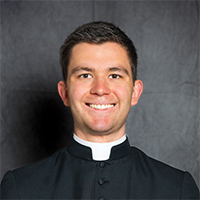 Home parish: St. John the Baptist, Tryon
Home parish: St. John the Baptist, Tryon
Birthplace: Durham
Raised in: Mills River, NC
Age: 25
What's something people would be surprised to learn about you?
“Something people would be surprised to learn about me is that when I was in high school, I started keeping bees. I had a good friend who had kind of started doing that. I was like, ‘Oh, that's interesting. I guess I'll do that as well.’” The bees are still at his family’s house, he said, and his mom takes care of them while he’s been at seminary. Murrey said he doesn’t plan to bring the bees to his parish assignment, but he wouldn’t mind helping with the bees at St. Matthew. (Read that story here.)
Deacon Andrew Jeffery Templeton
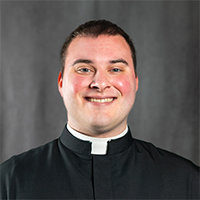 Home parish: St. Michael the Archangel, Gastonia
Home parish: St. Michael the Archangel, Gastonia
Birthplace and raised in: Gastonia, NC
Age: 26
What's something people would be surprised to learn about you?
“Something that people would be surprised to learn about me is that I'm afraid of heights and I don't like roller coasters, but I want to learn how to fly a plane. It’s a bit of an ironic thing.”
Deacon Joseph Gerard Yellico
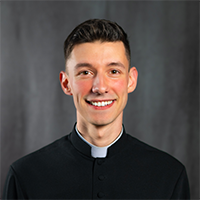 Home parish: St. Mark, Huntersville
Home parish: St. Mark, Huntersville
Birthplace: Long Island, New York, moved to North Carolina in 2006
Age: 30
What role does music play in your vocation?
“Music always has been a source of consolation and comfort for me. It’s also helped me look at how faith and reason are not two separate things, but they're complementary to each other.
“You have the theory of music, which is more mathematical and abstract, and then you have the artistry of music. Both of those things work together. So, in the same way, in theological training, you have the abstract; the philosophical principles that you follow within that. But at the same time, there's just so much beauty that's just around that and a part of it.
“So music has really been a source of reflection of kind of a bunch of different aspects of reality.
FAQs about the rite of ordination and more
-
What happens during the rite of ordination?
The ordination rite has several key moments:
- Calling of the Candidates: In the ordination rite, after the opening prayers of the Mass and the scripture readings, the presentation of the candidate takes place. The candidate responds, “Present,” (in Latin, “Adsum”) steps forward and makes a sign of reverence.
- Presentation, Inquiry and Acceptance: The bishop then asks for testimony that the candidate has received proper training and is worthy of ordination. Father Christopher Gober, diocesan vocation director, attests that the candidate is prepared. The bishop then says: “Relying on the help of the Lord God and our Savior Jesus Christ, we choose this man, our brother, for the Order of the Priesthood.” The people respond “Thanks be to God,” and also give their approval by a hearty round of applause.
- Examination of the Candidate: After the homily, the candidate approaches the bishop, who asks him if he is willing to serve Christ and His Church as a faithful priest. The examination concludes with this exchange: Bishop Martin, “Do you resolve to be united more closely every day to Christ the High Priest, who offered Himself for us to the Father as a perfect sacrifice, and with Him to consecrate yourself to God for the salvation of all?” Candidate, “I do, with the help of God.”
- Promise of Obedience: The candidate then promises obedience to the authority of the Church and to his own religious superiors, as he kneels before the bishop. Why? The bishop is the head of the local Church. St. Ignatius of Antioch said the bishop is “typos tou Patros” – he is like the living image of God the Father. (CCC 1549) “The promise of obedience they make to the bishop at the moment of ordination and the kiss of peace from him at the end of the ordination liturgy mean that the bishop considers them his co-workers, his sons, his brothers and his friends, and that they in return owe him love and obedience.” (CCC 1567)
- Prayer for the Candidates: Bishop Martin kneels and invites all of those present to join in prayer for the candidate. This period of prayer includes the Litany of Supplication (commonly called the Litany of the Saints). The chanting of this ancient litany is an especially moving and memorable moment in the ordination ritual. The candidate prostrates himself before the altar as the prayers of the litany invoke God’s saving mercy and the intercession of all the saints to send down the Holy Spirit upon this man, soon to be a priest.
The Litany of the Saints is an ancient prayer. The Catholic Encyclopedia says, “It was used in the ‘Litania Septiformis’ of St. Gregory the Great, and in the procession of St. Mamertus. In the Eastern Church, litanies with the invocation of saints were employed in the days of St. Basil (d. 379) and of St. Gregory Thaumaturgus (d. about 270). It is not known when or by whom the litany was composed, but the order in which the Apostles are given, corresponding with that of the Canon of the Mass, proves its antiquity.” - Imposition of hands: This is an outward sign of the outpouring of the Holy Spirit. Just as Jesus conferred His priesthood on His Apostles, so too does the bishop and other priests lay hands upon the ordinand. It is the most ancient and universal outward ritual of the Church. “The laying on of hands by the bishop, with the consecratory prayer, constitutes the visible sign” of ordination. (CCC 1538) In this moment, as Bishop Martin lays his hands upon the head of the kneeling ordinand, he prays silently for the invocation of the Holy Spirit.
All the other priests who are present also join in the ordination ceremony. Each one in turn lays his hands silently upon the head of the candidate. This signifies that they all belong to, and participate in, the one priesthood of Jesus Christ. It is also a sign welcoming the newly ordained into the common brotherhood as priest - Prayer of Consecration: The bishop prays: “Grant, we pray, Almighty Father, to this, your servant, the dignity of the priesthood; renew deep within him the Spirit of holiness; may he henceforth possess this office which comes from You, O God, and is next in rank to the office of Bishop; and by the example of his manner of life, may he instill right conduct. May he be a worthy coworker with our Order, so that by his preaching and through the grace of the Holy Spirit the words of the Gospel may bear fruit in human hearts and reach even to the ends of the earth.”
- Vesting the New Priest: The newly-ordained priest now removes his deacon’s stole and is presented with the symbols of his new office in the Church: a priestly stole and chasuble. This is called the investiture.
- Anointing of the Hands: The bishop anoints the palms of the new priest with sacred chrism, praying, “The Lord Jesus Christ, whom the Father anointed with the Holy Spirit and power, guard and preserve you that you may sanctify the Christian people and offer sacrifice to God.” After the anointing with the oil, the priest’s hands are wrapped with a linen cloth. Anointing with sacred oil, or chrism, symbolizes the Holy Spirit. It is another ancient ritual that has Old Testament roots.
- Presentation of the Gifts: After the gifts of bread and wine are brought to the altar, the bishop gives to the new priest a chalice containing the wine, mixed with water, and the paten holding the bread. These are the sacred vessels used at each Mass to hold the Body and Blood of Christ in the Eucharist. As the priest receives the chalice and the paten, Bishop Martin says: “Receive the oblation of the holy people, to be offered to God. Understand what you do, imitate what you celebrate, and conform your life to the mystery of the Lord’s cross.”
- Kiss of Peace: Lastly, Bishop Martin gives the kiss of peace to the new priest, saying: “Peace be with you.”
The Mass continues as usual, with the new priest concelebrating fully in his first Eucharistic Sacrifice, standing close to Bishop Martin in a place of honor before the altar. The new priest also helps distribute Holy Communion.
Why does the Church ordain priests?
The rite of ordination is more than an “election” or “delegation” of someone as a priest. The sacrament “confers a gift of the Holy Spirit that permits the exercise of a ‘sacred power’ which can come only from Christ Himself through His Church.” (CCC 1538) The divine grace received through this rite sets these men apart – consecrates them, invests them – within the Church and gives them a unique mission among the People of God.
Why are only men ordained priests?
Jesus chose 12 men as His Apostles, conferring upon them the mission to serve in His place on earth, and the Apostles did the same when they chose others to join and to succeed them. The Church is bound by the choice that Jesus Himself made, so it’s not possible for women to be ordained. Though in earlier times there were several semi-clerical ranks of women in the Church (called deaconesses), they were not admitted to orders properly so called and had no spiritual authority. They ministered to women in particular, in instances where customs called for men and women to remain separate.
Why does the sacrament of holy orders confer an indelible mark?
Holy orders is one of three sacraments that have an indelible spiritual character – that is, they cannot be repeated or rescinded. The others are baptism and confirmation. From the moment of his ordination, a priest’s vocation and mission mark him permanently. (CCC 1583)
Like the sacrament of marriage, in which men and women give themselves totally to each other and grow in holiness together, holy orders is directed toward the salvation of others through the gift of oneself. “They confer a particular mission in the Church and serve to build up the People of God. … Those who receive the sacrament of holy orders are consecrated in Christ’s name ‘to feed the Church by the word and grace of God.’” (CCC 1534-1535)
A priest acts “in persona Christi” – that is, he acts with the authority of Christ, representing the person of Christ in administering the sacraments and shepherding the faithful – and “in nomine ecclesiae,” in the name of the Church. That doesn’t mean a priest is perfect! That just means that in administering the sacraments, the power of the Holy Spirit is assured.What does it mean to be ‘the voice and hands of Christ’?
In his 1990 address “On the Nature of the Priesthood,” then Cardinal Joseph Ratzinger (later Pope Benedict XVI) said: “Jesus gave His power to the Apostles in such a way that He made their ministry, as it were, a continuation of His own mission. ‘He who receives you receives me,’ He Himself says to the Twelve (Mt 10:40; cf. Lk 10:16; Jn 13:10).”
He added, “If Church usage calls ordination to the ministry of priesthood a ‘sacrament,’ the following is meant: This man is in no way performing functions for which he is highly qualified by his own natural ability nor is he doing the things that please him most and that are most profitable. On the contrary, the one who receives the sacrament is sent to give what he cannot give of his own strength; he is sent to act in the person of another, to be his living instrument. For this reason no human being can declare himself a priest; for this reason, too, no community can promote a person to this ministry by its own decree. Only from the sacrament, which belongs to God, can priesthood be received. Mission can only be received from the One who sends, from Christ in His sacrament, through which a person becomes the voice and the hands of Christ in the world.”
— Catholic News Herald


